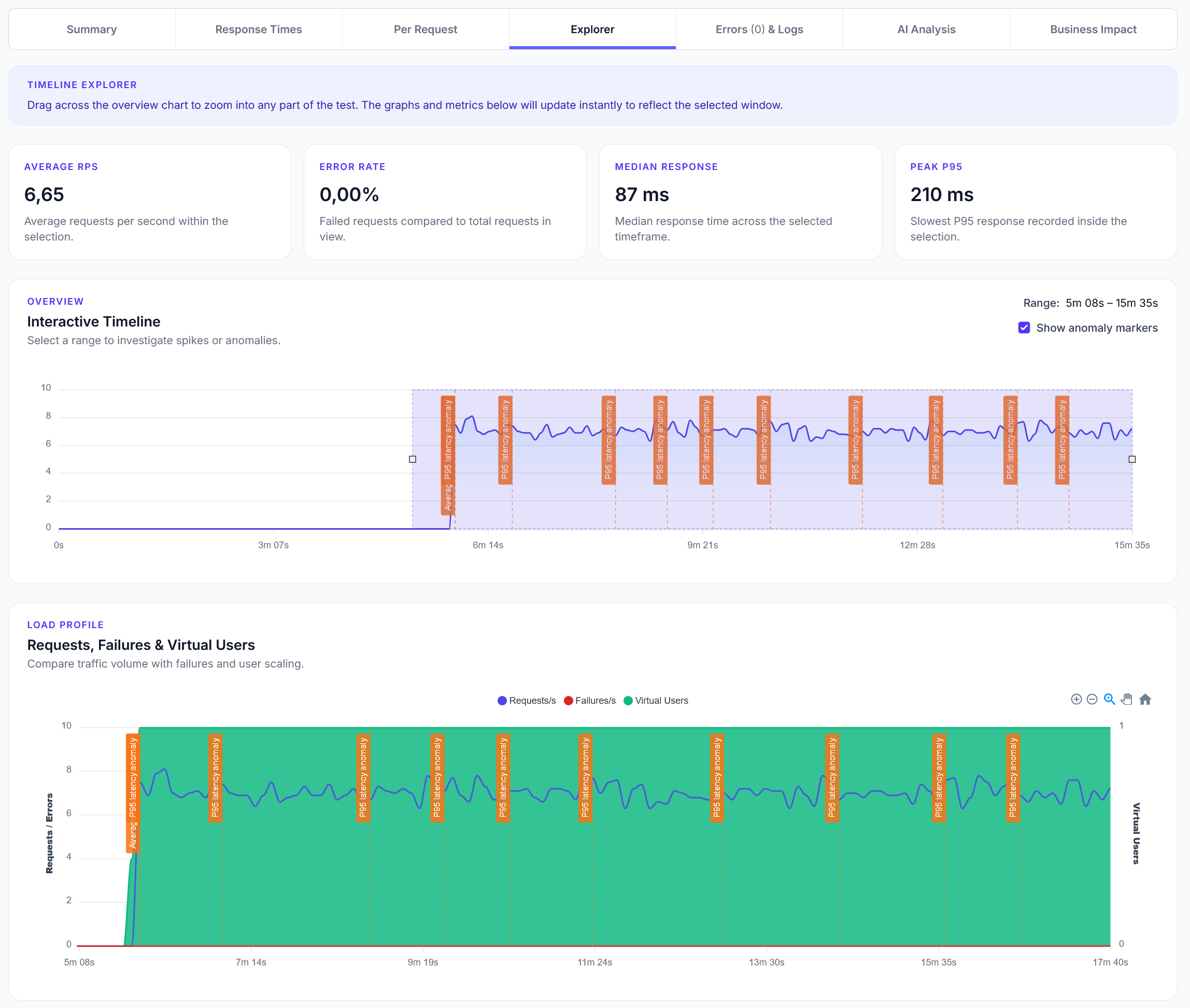
Explorer reports addition
We have added a new Explorer feature to reports, with a timeline scrubber and easy anomaly detection.
Test that logs in and then requests a profile page.
LoadForge can record your browser, graphically build tests, scan your site with a wizard and more. Sign up now to run your first test.
LoadForge allows you to login to any website, and then browse the site as a logged in user (or set of users).
This example test posts to a login page when it starts, then requests /profile and some static content normally. This is a great example for logging into a site and then requesting content after login.
The on_start definition will be run once by each individual simulated user. So they all login first, and then
execute your various tests.
LoadForge will automatically keep sessions, meaning you can login and then browse the site like a browser would.
import time
from locust import HttpUser, task, between
class QuickstartUser(HttpUser):
def on_start(self):
# Form post to /login with email and password
self.client.post("/login", {
'email': 'user@domain.com',
'password': 'passw0rd'
})
@task(2)
def profiles(self):
self.client.get("/profile")
@task(1)
def statics(self):
self.client.get("/img/logo.png")
self.client.get("/css/styles.css")
self.client.get("/js/scripts.js")
This test starts with a login and a request to the index page of the site. It then finds all anchor tags (a href) and randomly browses through them.
import random
from locust import HttpUser, TaskSet, task
from pyquery import PyQuery
class AwesomeUser(HttpUser):
def login(self):
self.client.post("/login", {
"username":"EXAMPLE_USER",
"password":"PASSWORD"
})
def index_page(self):
r = self.client.get("/")
pq = PyQuery(r.content)
link_elements = pq("a")
self.toc_urls = []
for l in link_elements:
if "href" in l.attrib:
self.toc_urls.append(l.attrib["href"])
def on_start(self):
self.login()
self.index_page()
@task
def load_page(self):
url = random.choice(self.toc_urls)
r = self.client.get(url)
You can easily login using basic auth with any LoadForge request by adding the auth parameter to your get or post request object. This example demonstrates logging in as user1 with password password1.
This guide includes two examples: a POST request with data and a GET request with authentication.
import time
from locust import HttpUser, task, between
class QuickstartUser(HttpUser):
wait_time = between(3, 5)
@task
def login_samples(self):
self.client.get("/myUrl", auth=("user1", "password1"))
self.client.post("/myUrl", data={"item": "123"}, auth=("user1", "password1"))
In addition, you can also use the on_start definition to globally set them:
from locust import HttpUser, task, between
import base64
class WebsiteUser(HttpUser):
wait_time = between(1, 2)
def on_start(self):
username = "user1"
password = "password1"
credentials = f"{username}:{password}"
encoded_credentials = base64.b64encode(credentials.encode("utf-8")).decode("utf-8")
self.client.headers.update({
"Authorization": f"Basic {encoded_credentials}"
})
@task
def index(self):
self.client.get("/")
@task
def dashboard(self):
self.client.get("/dashboard")
For login pages that require CSRF protection, see the session cookie management guide for detailed implementation. to Handling CSRF.
LoadForge is powered by locust, meaning open source locust users can copy this script as well. If you are a locust user, consider importing your script to LoadForge to supercharge your testing!